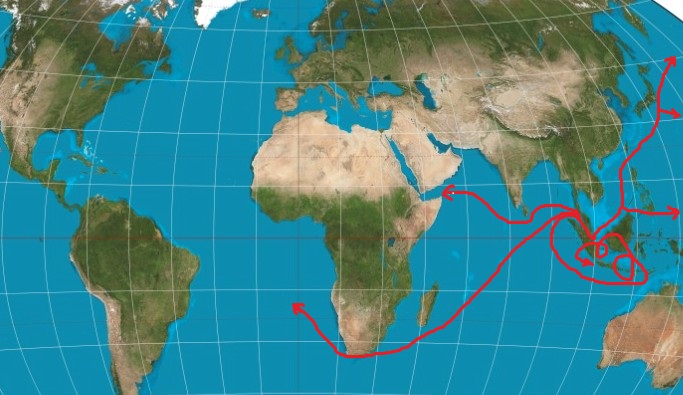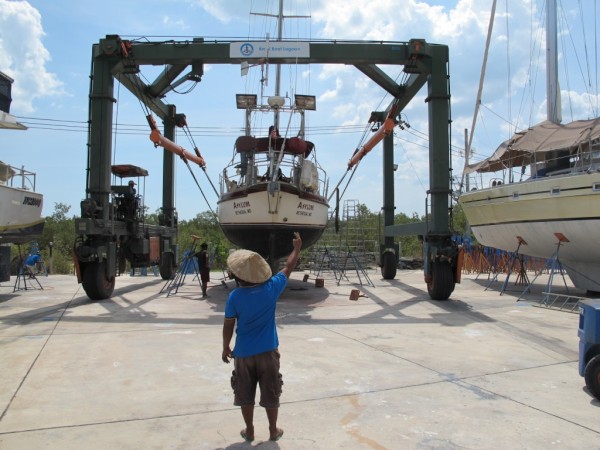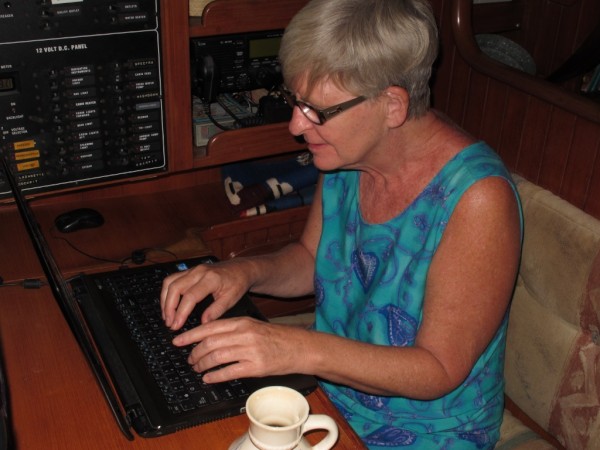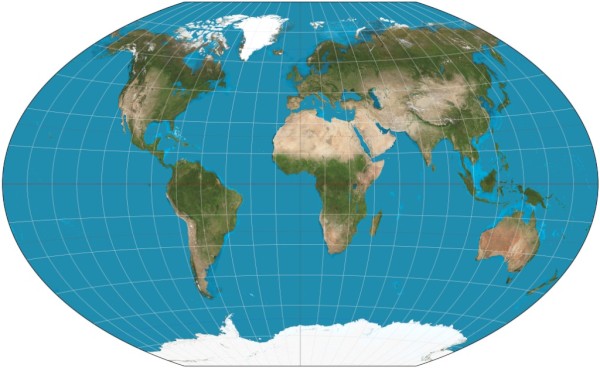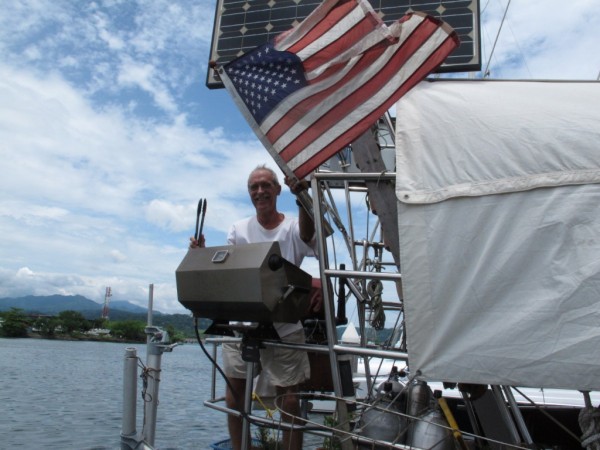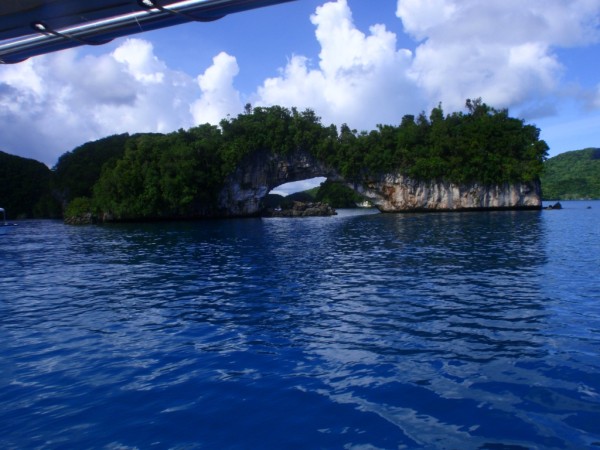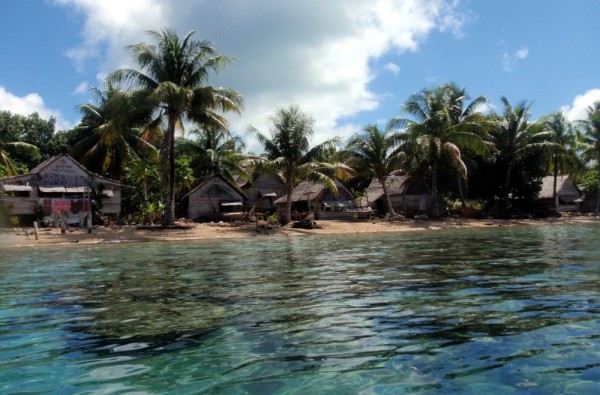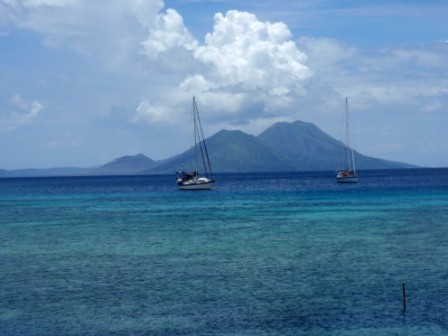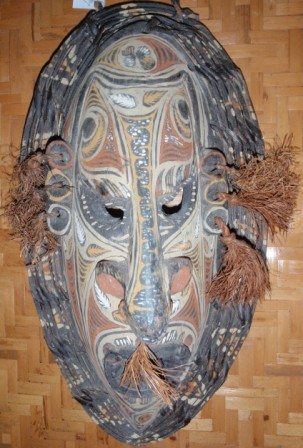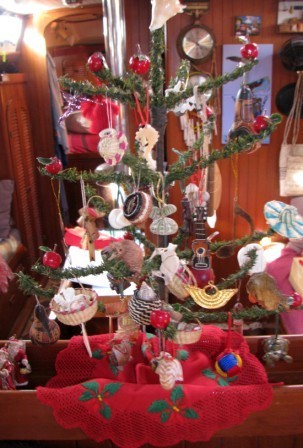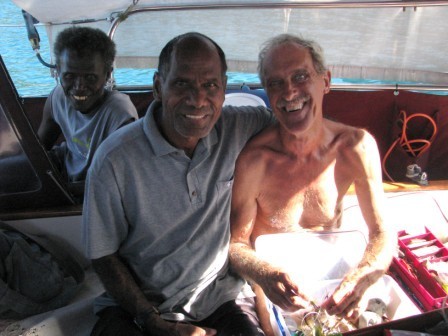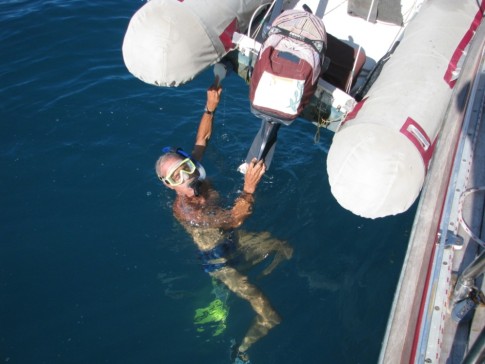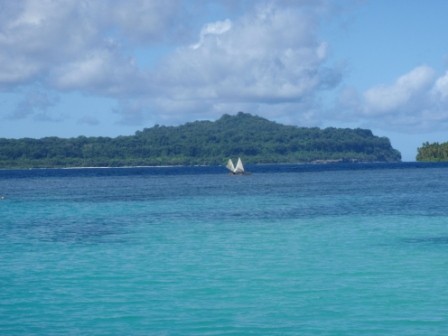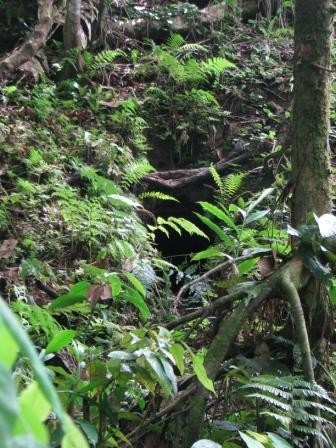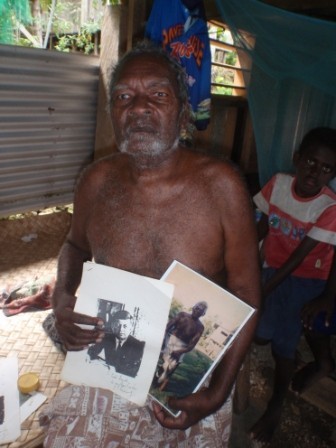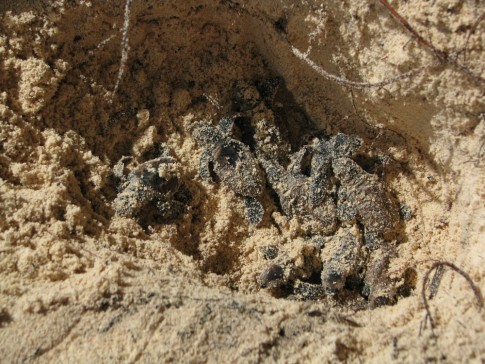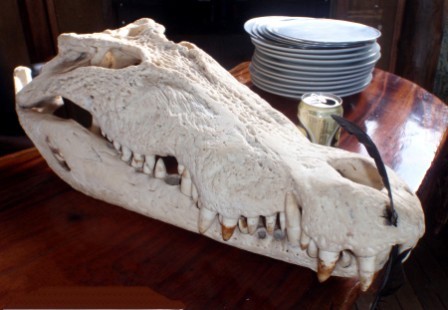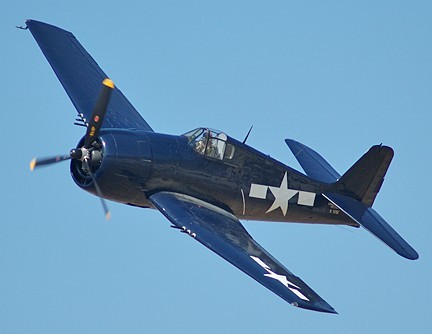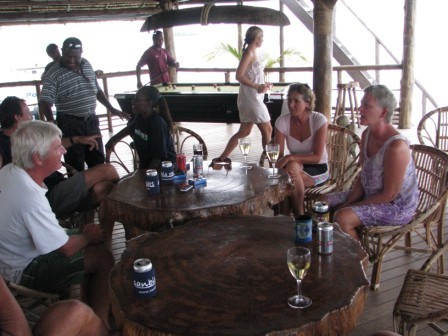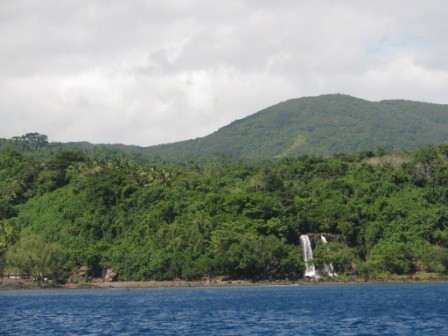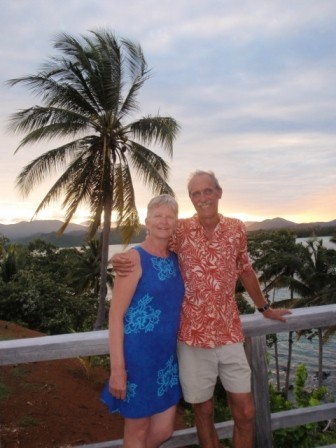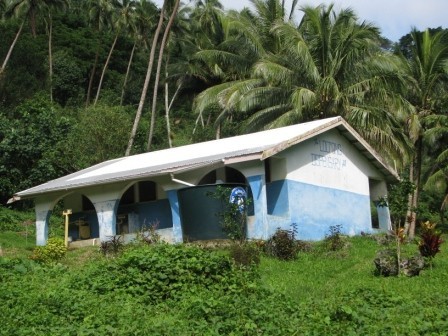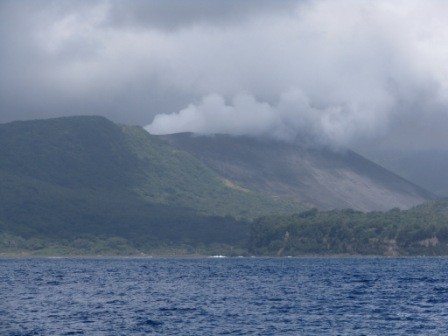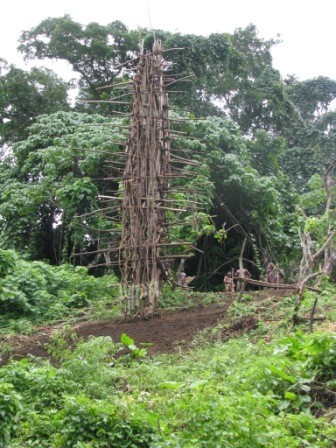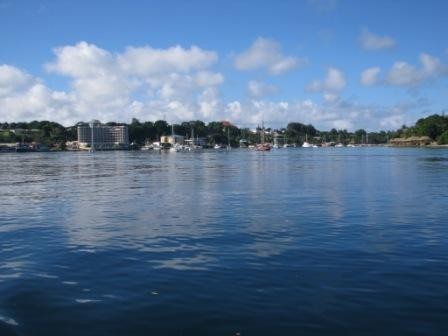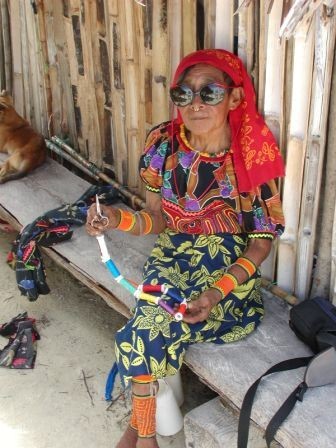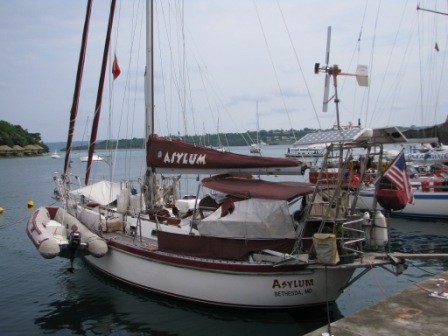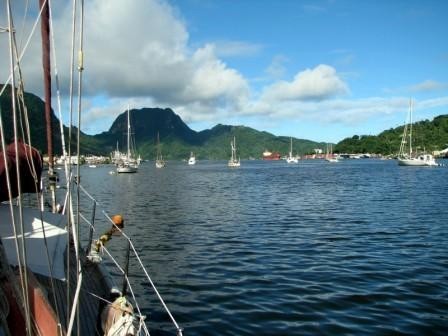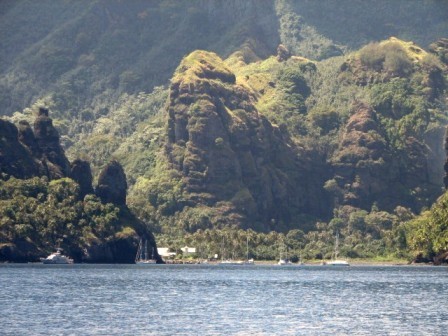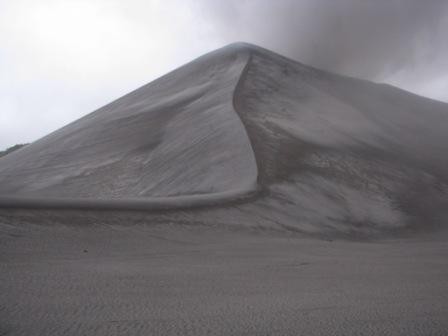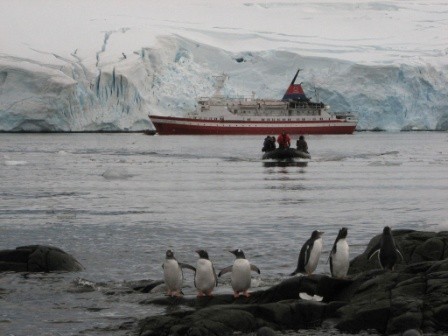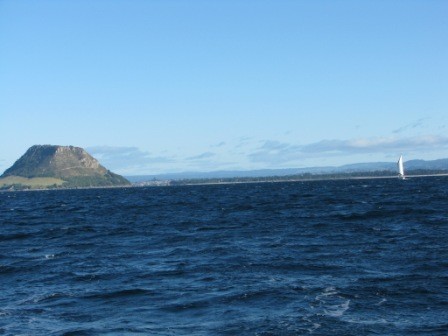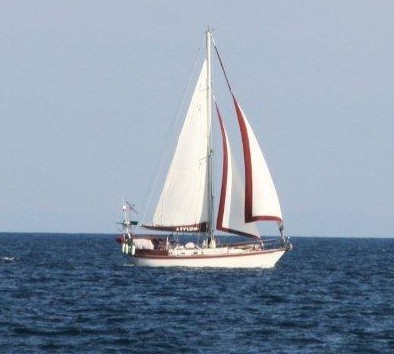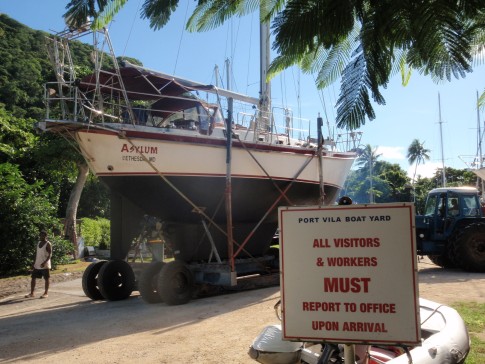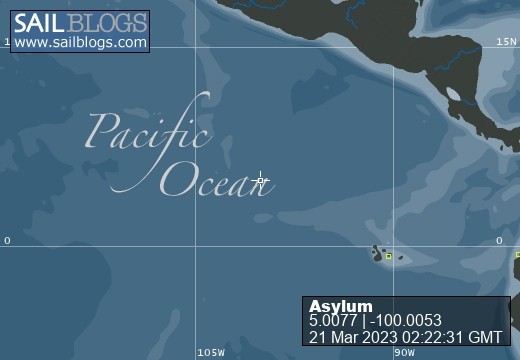
Asylum
22 June 2019 | Straits Quay Marina, Penang, Malaysia
17 July 2016 | Penang, Malaysia
20 February 2016 | Penang, Malaysia
02 October 2015 | Thailand
11 April 2015 | Krabi Boat Lagoon Marina, Thailand
25 December 2014 | Langkawi, Malaysia
04 June 2014 | Philippines
07 January 2014 | Brookeville, MD
04 July 2013 | Subic Bay Yacht Club, Philippines
31 October 2012 | Palau
02 December 2011 | Hermit Islands, Papua New Guinea
08 November 2011 | Maryland, USA
15 May 2011 | Kavieng, New Ireland, PNG
26 April 2011 | Kavieng, New Ireland
26 March 2011 | Kokopo, New Britain, Papua New Guinea
16 March 2011 | Kokopo, New Britain, Papua New Guinea
12 February 2011 | From Peava again
05 February 2011 | Solomon Islands
01 December 2010 | From Lola Island, VonaVona Lagoon, Solomon Islands
30 November 2010 | Peava, Nggatoke, Solomon Islands
Inmate Update #7: Trinidad back north to the Virgins
17 May 2001 | St. Thomas, USVI
Roseanne Rosannadanna was right: It's always something; if it isn't one thing it's another. Her wise observation is completely consistent with a hard and fast cruiser law, "it's either broke or going to break," and its corollary, "if you think nothing's wrong, you've overlooked something." Over the last few months, Asylum has turned out to be living proof of all these maxims. Virtually none of the systems or auxiliary gadgets we have on board has escaped these truths. As a fellow cruiser observed philosophically, "I sail into exotic ports to work on my boat and repair things." That's certainly been our experience lately.
Which is why we're in a marina in St. Thomas. Even as I type, Jim and a mechanic are taking the engine apart to do both routine maintenance and try to diagnose an overheat problem we've been experiencing. I won't bore you with all the details, but we no longer harbor the naïve notion that having done our best to install the best equipment possible we would be immune to all the break-down woes we heard other cruisers talking about. We've had 'em all and most assuredly have more to look forward to. What's most comforting, as things act up and fall apart, is that Jim has proven amazingly adept at diagnosing and repairing them and that the community of cruisers is always generously available to provide advice, parts, and assistance when things go kaput. We've especially benefited from that support over the past few months. Let me hasten to add that despite these often-incredibly frustrating moments, we're still having fun!
When last we left you in Update #6, we were on the verge of leaving Trinidad. Hard to believe another 6 months has passed and that we were once as far south as Trinidad and now as far north as the Virgin Islands. Shortly we will turn around and go south again, but more on that later. When we left Trinidad, we were in the company of two other boats, our good friends Suzannah and Sunshine. We "staged" in an anchorage near the "boca" (a narrow pass between the main island of Trinidad and a small, off-shore island) thru which we had to go to head north. Timing our departure to arrive in Grenada by mid-day meant leaving Trinidad at about 1 a.m. So we all dropped anchor, had an early dinner and went to bed to get in a little sleep before heading out. During our slumber, our friends on Sunshine were visited by fruit bats (common in the area), and woke to find their bananas neatly sliced open and cleaned out and bat guano everywhere in the boat. Apparently these little guys had had quite a party. While we were circling in the pitch darkness raising our mainsail and generally getting ready to go, unbeknownst to us, Joe and Lynn on Sunshine were mopping up bat sh--, uh, guano. In focusing on their cleanup task, they made the fateful mistake of not raising their main sail before heading out.
When everyone was ready, we led the parade out thru the boca. When we had arrived at the anchorage earlier in the afternoon, the boca was flat calm, but now, upon entering it, we discovered it was broiling and churning with waves and current which we couldn't see because it was pitch black! Good thing the pass itself is short (only about a half mile), cuz it was a wild ride thru there. The bow went straight up and then straight down and even with the sail up we were probably rolling 20 degrees each way. I'm sure we looked like one of those rodeo-bulls you see thrashing on its mount in western bars. And poor Sunshine, without their main up, really took a thrashing going thru. They learned a hard lesson that we'd already learned: sailboats like to have their sails up, even if you're motoring, and reward you with much more stable rides. Though it took a while, the seas eventually calmed down, and we had nice sail the rest of the day back into Grenada. That all happened on Dec. 3.
We stayed in Grenada a couple of weeks, our plans somewhat dependent on Sunshine's at this point. Just as Lynn and Joe were about to become full time cruisers a year ago, Joe was diagnosed with a form of mouth cancer and had undergone extensive surgery and radiation. The oncologist finally turned him loose, so without functioning salivary glands (annihilated by the radiation) and always with a bottle of water in his back pocket, he and Lynn finally set out to be cruisers. Shortly before we were all due to leave Trinidad (where Joe and Lynn had bought Sunshine, making this their maiden voyage on the boat), he experienced a painful flare-up and thought he was going to have to return to the States from Grenada to have it checked out. We told them we'd stay with Lynn. Hoping maybe to reduce the inflammation with antibiotics, the oncologist prescribed one that we fortunately had on board, so they decided to press on north. We stuck with them and left Grenada for St. Vincent and the Grenadines on Dec. 18.
Our first anchorage there was in Saline Bay on Mayreau Island. And that night we learned another painfully-won lesson: if you think you need a stern anchor at the dinghy dock, DO IT (this based on the formula of another sailor's adage: if you think you need to reef [the sails], it's already too late). We all decided to go out to dinner at Mayreau and took our dinghy to the dock. The dock was high, and here was a bit of surge so we knew we needed to secure it so that it wouldn't go under the dock. Jim (to his credit) speculated that we might want a stern anchor (to hold the dinghy off the dock), but I (stupidly) said, "naaah. Let's just tie it along side with a stern line. It's not gonna go anywhere." When we returned to the dock after dinner, all laughing because the most direct path back to the dock took us thru, and a couple of times, eye-to-eye with, a small gaggle of very large cows, we were horrified to see the dinghy wedged half way under the dock, being pounded into it by the surge. It was FULL of water, everything that was in it was floating, including the gas tank, and the engine looked like something had taken a bite out of it--it was all chewed up with fiberglass fibers sticking out everywhere. The whole thing was a horrible sight and our stomachs dropped around our knees.
We managed to get it un-wedged, and Jim leapt in and started bailing. Lynn and I sat on the edge of dock and pushed the dinghy with our legs to keep it off, while Joe held the bow line. Our biggest concern, of course, was the fate of the engine; fortunately the dinghy itself only appeared to be scraped up, not punctured. When he finished bailing, Jim gingerly removed the chewed-up cover from the engine to assess the damage. Our options at that point, if it didn't work, were to row out to Sunshine and get their dingy or to swim, neither desirable because it was rough and a goodly distance to where we were anchored. So we all held our breath as Jim carefully examined the engine's inerds. He said it looked like the cowling had "sacrificed itself" and the guts appeared to be ok. Thankfully, it started right up. We delivered Joe and Lynn to Sunshine and launched into cleaning up the mess, mostly getting the salt water off of everything stored in the dinghy.. In the morning, as if repairing a fine piece of shattered pottery, we carefully pieced the chewed-up cowling back together and reassembled it with the finest and single most important equipment on any boat: duct tape! Our bandaging job was quite impressive and quite functional. It lasted till Mom brought us a new cowling when she visited in March, and we reluctantly pitched the old one. In fact, many cruisers intentionally mess up their dingy engines to discourage thieves (dinghies and their engines being the most frequently stolen items), and we considered just living with the patched one we had. Decided to go with the new one though, in case we did something stupid again and the engine needed more protection than the soft duct tape would afford.
Not too long after that, when raising the engine from the dinghy to its mount on the stern of the boat, Jim failed to detach all the fittings, so as I hauled it up, I met first with resistance and then with a popping noise as the fuel fitting broke loose. @#$%#!! Fortunately, Jim was able to jury rig something (see para #2) till a new fitting could be found. Lesson from that one: never raise the engine till I ask him specifically if he's detached everything. It's the little stuff that gets you every time.
We stayed in St. Vincent and the Grenadines thru early Feb, spending Christmas and New Year's in Bequia (one of the SV&G islands) with our "best" cruiser buddies. During January we toured thru a number of the other islands, checking out anchorages we'd missed on the trip down. Returning to Bequia after one of these sojourns, motoring into the harbor, the engine overheated. Although the overheat alarm didn't stay on long, it nonetheless was something we would need to look into. Jim started thru the series of things to check, one of which required that we close the main thru-hull fitting that provides raw water to the engine. As he moved the valve handle, it broke off in his hand (see cruiser law in first para). Oy vay. Not good. There was no way to fix the handle; it would have to be replaced, which was beyond even Jim's blooming abilities. We called Fix Man, the resident mechanical guru (a Swede who had come over as a cruiser and got tired of fixing his own boat so started a business fixing others'). After thinking he could repair it while we were in the water, and struggling valiantly to do so, he concluded that we would have to come out of the water. But where? There are no haulout facilities in Bequia!? Turns out, however, there's a marine railway there, and we were in for a new experience.
The marine railway works by lowering into the water, on a pair of railroad tracks, a big V-shaped cradle, into which the boat is carefully positioned while still afloat. The cradle with the boat in it is then hauled back up onto the land with a big cable, literally inch by inch, until the boat is completely out of the water. In our case, getting the boat appropriately positioned in the cradle turned out to be a real ordeal, largely because our keel is much wider than the I-beam it was supposed to sit in at the bottom of the cradle. John, the local guy positioning the boat, was free-diving with a snorkel, up and down dozens of times, pushing and coaxing the boat into place in the cradle. It was a protracted and difficult process that required considerable strength and agility and took a couple of hours to get just right. Fortunately he was being very careful to make sure the boat was positioned correctly and safely. He was frustrated and tired and just about to give the signal to the guy operating the engine to begin hauling us out, when a big inter-island ferry roared into the harbor, throwing a huge wake that jostled the boat violently and undid all the positioning that John had so painstakingly accomplished over the last 2 +hours. While we grabbed the lifelines to keep from being thrown overboard, John, still in the water, let loose with a string of well-justified expletives. And then we started all over. The second round went a little faster, and we cleared the final inch out of the water just in time for everyone to leave for lunch. We learned later that John was in his 60s!
Fix Man came after lunch and the new thru-hull was duly installed. We were inched back into the water and launched shortly after 4:30 on the same day. While we were out of the water and Fix Man was working, we took advantage of being able to get at the bottom and touched up some bottom paint, cleaned the prop, and did a few other chores that only can be done out of the water. All in all, it wasn't that bad... Back in the water, we motored across the harbor to anchor and join Suzannah for cocktails, I said to Jim, "d'ya s'pose we oughta just take a look and make sure no water's coming in the new fitting...?" Good idea, says he, and raises the floor board, only to be greeted with a gush of sea water flowing in. Oy vay. Not good. I quickly turned the boat around while Jim got Fix Man on the radio. He quickly pulled up along side while we were still underway to check out the leak and said we'd have to come back out of the water. Tonight. And spend the night out. Oy. The last thing we wanted to do was start that process again, and at 5 o'clock! But we did, and the lessons learned from the first two positionings made this one go pretty smoothly. We were back on the hard by 5:30. Fix Man declared the problem was his fault and the second haulout and all the additional work were on him. In the end, everything was fine. No leaks. (But after all that, we still hadn't solved the overheat problem. All we had was a new thru-hull fitting!)
That evening, friends on Saltwhistle (a Canandian boat we met in Staten Island on the way back from Maine in Sept. 99) took pity on us and invited us for dinner. Over cocktails we watched as the boat anchored in front of them dragged down on them, this boat having refused to move earlier when Saltwhistle suggested they were anchoring too close. This is always a problem in crowded anchorages, and there's nothing that terrifies cruisers more than a charterer anchoring near them, unless it's a French charterer. At one point the dragging boat was so close to Saltwhistle that I was able to grab its stern rail and push it away. The possibility of banging into other boats does not make for restful nights.
Joe on Sunshine went back to see his US doctor from Bequia; Lynn stayed on the boat, deciding she'd be more comfortable on a mooring in the harbor rather than at anchor (parts of Bequia harbor were not good holding, and in heavy winds, anchors often dragged there). There's quite a large "mooring field" in the harbor, and she was on a good one right in the center of the harbor. We promised to watch out for Lynn. Joe was gone 10 days and everything was fine, both with him and the boat while he was gone. The night he returned, however, Lynn woke up around midnight thinking it had become awfully rolly in the anchorage, which was unusual given where they was moored. She stuck her head out the cabin to see what was going on and said, "I saw the lights of St. Vincent [the island to the north of Bequia] going by!" You can't see the lights of St. Vincent from where they were moored. Their mooring had broken loose and they literally were free-floating out to sea, thru a very crowded anchorage. That Sunshine didn't hit anything on its way to Mexico was a major miracle. The next night, having decided to forgo another mooring, they anchored. Early that evening, another boat's mooring gave way and they had to fend that boat off them, ultimately grabbing it with the help of other cruisers who had quickly formed a rescue brigade and tying it to their stern until the absent owners could be found. Not long before all this, when we were telling Sunshine some of our early passage tales, Joe had complained that nothing interesting ever happened to them. We suggested that he best keep his mouth shut!
We left St. Vincent and the Grenadines in early Feb, on our way to Martinique. Decided to by-pass St. Lucia, except to "yellow-flag" it for a night (i.e., not check in, but anchor and sleep). The trip from Rodney Bay on St. Lucia's NW coast up to Martinique is only about 25 miles, and theoretically a good sailing angle. When we left Rodney Bay, again in company with Suzannah and Sunshine, it was flat calm, with light winds predicted, so we put up all the sails. As we got out there, we found big, gentle rolling swells. Given the benign conditions, we put out 2 trolling lines, one a hand-line cleated down on the starboard side and the other from a pole off the stern. We hadn't been out too long, however, when conditions started to deteriorate: the wind picked up significantly and it was pretty clear a squall was on its way in our direction. Jim was just on his way forward to pull in the hand-line when he noticed that our sophisticated alert system (a clothes pin on the lifeline) had been tripped, which meant we could have a fish on the line. As he started to haul it in (there was definitely something there), the squall hit. The wind increased dramatically, it was pouring rain, and the seas had gotten big and nasty. And of course we had too much sail up. I was trying to keep the boat moving, but moving slowly, so that Jim could get the line in, which by now had significant tension on it. As he wrestled with that and I wrestled with the helm (we had sustained winds of over 30 knots!), darned if the stern line didn't zzzzziiinnnng! We had another fish! Jim cleated down the hand line, raced to the stern to set the drag on that line, and then returned to hauling the first one in. Bear in mind that it's raining like crazy and the boat's motion is pretty wild while Jim is sitting on the deck, dragging this line in hand over hand.
He got that one on board, a big unhappy barracuda, and turned to the pole on the stern. I was still trying to keep the boat slow but not in irons (i.e., a dead stop), while he reeled this one in: a big, equally unhappy kingfish. As he got it out of the water, it was swinging in such wide arcs that he couldn't reach it to pull it on board. Finally had to use the boat hook to grab the line and pull it in. Meanwhile, I'm driving with one hand and poised with the other to squirt cheap rum into the gills to subdue it (yes, this does work!). The squall finally passed, the fish were on board, and we set off again to Martinique, me driving and Jim cleaning fish on the stern. We had some mighty good eating the next few nights! (Yes, barracuda is very good!)
Martinique is one of our favorite spots, the French notwithstanding. In fact, it's the French part that makes it so wonderful. The food and wine there are fabulous, the boat services are great, the island itself is beautiful with lots of history and culture. Many cruiser friends beat it to Martinique the minute hurricane season ends and stay there till it starts again. All of us were addicted to baguettes (which you simply didn't eat if they were more than a couple hours old!). What better place to have my mother pay her threatened visit!? She spent 12 days with us there, and we did the island. We sailed up to the NW coast to the town of St. Pierre where the volcano wiped out the town in 1902 and traipsed thru the ruins. Then back down the coast, checking out the other beautiful anchorages and cute towns (as well as their bakeries). We threw her a cocktail party to meet the people we hang out with and had 15 people in the cockpit, cheek-to-cheek as it were. Mom was quite a trooper, crawling on and off the boat from the dinghy, often in lumpy waters, and up and down dinghy dock ladders (some of them not easy even for the younger crowd!). She seemed to have a great time and we began to fear she'd decide not to leave...
We left Martinique, reluctantly, at the end of March and headed for Marie-Galante, a small, sleepy island that belongs to Guadeloupe, off its SE coast. Not many cruisers go there because you have to go east to get there and, well, there's not much there. When we left Martinique we went up the windward side (i.e., the east side) of Dominica, on a lovely overnight sail. Not many people travel the windward side of the islands, but the weather was perfect (for a change) and we had a great trip. Didn't catch any fish, but the eastern coast of Dominica was beautiful. It's too bad that more people don't go to Marie-Galante, but fine with us. Mostly they grow sugar cane there, which is still hauled around in ox-drawn carts. It claims to be the island of 100 windmills, and there are still a few old, stone ones functioning. Those who don't work in the cane fields or processing plants fish. I fell in love with the shape of the big fish trap baskets they use, and after unsuccessfully trying to find a small bamboo version (I'd seen one in a tiny little museum attached to one of the windmills), found an old fisherman who agreed to make one for me. I negotiated with him in my limited French, but I was pretty sure we had communicated. He said to come back tomorrow. Sure enough, when we went back, the basket was underway, though not finished. We sat and watched him work, his old gnarly hands (that Jim said had a tremor), carefully stripping the bamboo and then weaving it with remarkable precision into this fish trap basket that has an intricately shaped entry passage where the fish can get in but not out. The basket is a treasure, and one of the reasons we loved our 9 days in Marie-Galante.
From there we worked our way back west to Guadeloupe where we were meeting our next round of visitors, niece Ashley and her friend. They wisely decided on a sailboat in the Caribbean rather than a Florida beach for their senior year spring break. Unfortunately their time was brief, but we had a great destination for them in The Saints, the collection of small islands south of Guadeloupe. For us, there was the added bonus of meeting up with our crazy Irish friend, Dave (remember single-hander Dave from our wild trip down from the Bahamas?), whom we hadn't seen since we left him engine-less in the Mona Passage in Dec. 99. He was back in the Caribbean to pick up the boat and take it to Spain and just happened to be in The Saints at the same time we were there. Getting down to The Saints we had a great sail, but paid our dues on the way back with wind right on the nose and sloppy, lumpy seas. Hated to end the kids' trip with a yucky sail, but that's what happens when you have a schedule, and suddenly the week was over and we had to put them back on a plane--with AP exams, proms, and graduation ahead. Having 2 teenagers on board definitely changes things, but we had a great time!
Next stop: St. John, US Virgin Islands. We re-grouped in Guadeloupe for a couple of days after the kids left and then set out on a 40 hour sail straight NW to St. John. It was an easy and pleasant ride, complete with catching an 8-lb, 22 inch tuna the second day out! Talk about good eating!!
We decided to come back to the Virgins to see some friends who were preparing, and just left, to sail to Ireland, have access to 800 numbers to start ordering more stuff we've discovered we can't live without, and deal with our still-unsolved overheating and battery problem (the latter of which I've studiously avoided whining about but consumed countless hours and days of many people's time these past few months). One thing we've learned in our time as live-aboards is that power in general, and batteries in particular, are the bane of everyone's existence. We haven't met anyone who hasn't had battery problems, and we're no exception. There's an immense amount of confusion, folklore, mysticism, and gibberish out there about batteries, and we've experienced all it. One good thing to come of our battery woes, though, is that a cruiser friend helped Jim re-wire the whole boat, declaring it a "bloody miracle" that we'd functioned as well as we had for these 18 months given the goofy way the boat had been wired. The other good thing is that as of Monday, we have 3 new batteries, giving us at least 50% more capacity than we had, which should make our power-management much easier. The killer on a boat is refrigeration, but we're not ready to give it up yet...
So there you have it: up to date with Asylum and its Inmates. It's been a largely uneventful 6 months, with a few hairy moments but mostly a lot of fun. We've reached that point where our band of close cruiser friends--the pack we've been traveling with up and down the chain for the last 15 months--is starting to disperse, all having made different decisions about where to go in this next year. We're going west (at least that's the intent), some are going north to the States, some east to Europe, others will continue to "do" the island chain. We've said a fair number of good-byes lately, but we figure we'll run into these guys again somewhere. That's part of the attraction of cruising.
I can see the end of the page looming near so it's a good thing I have no more to report. We'll be here in the Virgins till early June, when we'll hope for the full moon and perfect winds on the same day and set sail directly for Venezuela. We figure it'll be 3-4 days to get there. All the fishing lines are poised to go!
We hope you all have a great summer, complete with your perfect vacation somewhere. Please keep in touch; we love hearing from you (although we need to be deleted from a few more joke/stuff distribution lists!).
Take care and stay tuned...
The Inmates
Which is why we're in a marina in St. Thomas. Even as I type, Jim and a mechanic are taking the engine apart to do both routine maintenance and try to diagnose an overheat problem we've been experiencing. I won't bore you with all the details, but we no longer harbor the naïve notion that having done our best to install the best equipment possible we would be immune to all the break-down woes we heard other cruisers talking about. We've had 'em all and most assuredly have more to look forward to. What's most comforting, as things act up and fall apart, is that Jim has proven amazingly adept at diagnosing and repairing them and that the community of cruisers is always generously available to provide advice, parts, and assistance when things go kaput. We've especially benefited from that support over the past few months. Let me hasten to add that despite these often-incredibly frustrating moments, we're still having fun!
When last we left you in Update #6, we were on the verge of leaving Trinidad. Hard to believe another 6 months has passed and that we were once as far south as Trinidad and now as far north as the Virgin Islands. Shortly we will turn around and go south again, but more on that later. When we left Trinidad, we were in the company of two other boats, our good friends Suzannah and Sunshine. We "staged" in an anchorage near the "boca" (a narrow pass between the main island of Trinidad and a small, off-shore island) thru which we had to go to head north. Timing our departure to arrive in Grenada by mid-day meant leaving Trinidad at about 1 a.m. So we all dropped anchor, had an early dinner and went to bed to get in a little sleep before heading out. During our slumber, our friends on Sunshine were visited by fruit bats (common in the area), and woke to find their bananas neatly sliced open and cleaned out and bat guano everywhere in the boat. Apparently these little guys had had quite a party. While we were circling in the pitch darkness raising our mainsail and generally getting ready to go, unbeknownst to us, Joe and Lynn on Sunshine were mopping up bat sh--, uh, guano. In focusing on their cleanup task, they made the fateful mistake of not raising their main sail before heading out.
When everyone was ready, we led the parade out thru the boca. When we had arrived at the anchorage earlier in the afternoon, the boca was flat calm, but now, upon entering it, we discovered it was broiling and churning with waves and current which we couldn't see because it was pitch black! Good thing the pass itself is short (only about a half mile), cuz it was a wild ride thru there. The bow went straight up and then straight down and even with the sail up we were probably rolling 20 degrees each way. I'm sure we looked like one of those rodeo-bulls you see thrashing on its mount in western bars. And poor Sunshine, without their main up, really took a thrashing going thru. They learned a hard lesson that we'd already learned: sailboats like to have their sails up, even if you're motoring, and reward you with much more stable rides. Though it took a while, the seas eventually calmed down, and we had nice sail the rest of the day back into Grenada. That all happened on Dec. 3.
We stayed in Grenada a couple of weeks, our plans somewhat dependent on Sunshine's at this point. Just as Lynn and Joe were about to become full time cruisers a year ago, Joe was diagnosed with a form of mouth cancer and had undergone extensive surgery and radiation. The oncologist finally turned him loose, so without functioning salivary glands (annihilated by the radiation) and always with a bottle of water in his back pocket, he and Lynn finally set out to be cruisers. Shortly before we were all due to leave Trinidad (where Joe and Lynn had bought Sunshine, making this their maiden voyage on the boat), he experienced a painful flare-up and thought he was going to have to return to the States from Grenada to have it checked out. We told them we'd stay with Lynn. Hoping maybe to reduce the inflammation with antibiotics, the oncologist prescribed one that we fortunately had on board, so they decided to press on north. We stuck with them and left Grenada for St. Vincent and the Grenadines on Dec. 18.
Our first anchorage there was in Saline Bay on Mayreau Island. And that night we learned another painfully-won lesson: if you think you need a stern anchor at the dinghy dock, DO IT (this based on the formula of another sailor's adage: if you think you need to reef [the sails], it's already too late). We all decided to go out to dinner at Mayreau and took our dinghy to the dock. The dock was high, and here was a bit of surge so we knew we needed to secure it so that it wouldn't go under the dock. Jim (to his credit) speculated that we might want a stern anchor (to hold the dinghy off the dock), but I (stupidly) said, "naaah. Let's just tie it along side with a stern line. It's not gonna go anywhere." When we returned to the dock after dinner, all laughing because the most direct path back to the dock took us thru, and a couple of times, eye-to-eye with, a small gaggle of very large cows, we were horrified to see the dinghy wedged half way under the dock, being pounded into it by the surge. It was FULL of water, everything that was in it was floating, including the gas tank, and the engine looked like something had taken a bite out of it--it was all chewed up with fiberglass fibers sticking out everywhere. The whole thing was a horrible sight and our stomachs dropped around our knees.
We managed to get it un-wedged, and Jim leapt in and started bailing. Lynn and I sat on the edge of dock and pushed the dinghy with our legs to keep it off, while Joe held the bow line. Our biggest concern, of course, was the fate of the engine; fortunately the dinghy itself only appeared to be scraped up, not punctured. When he finished bailing, Jim gingerly removed the chewed-up cover from the engine to assess the damage. Our options at that point, if it didn't work, were to row out to Sunshine and get their dingy or to swim, neither desirable because it was rough and a goodly distance to where we were anchored. So we all held our breath as Jim carefully examined the engine's inerds. He said it looked like the cowling had "sacrificed itself" and the guts appeared to be ok. Thankfully, it started right up. We delivered Joe and Lynn to Sunshine and launched into cleaning up the mess, mostly getting the salt water off of everything stored in the dinghy.. In the morning, as if repairing a fine piece of shattered pottery, we carefully pieced the chewed-up cowling back together and reassembled it with the finest and single most important equipment on any boat: duct tape! Our bandaging job was quite impressive and quite functional. It lasted till Mom brought us a new cowling when she visited in March, and we reluctantly pitched the old one. In fact, many cruisers intentionally mess up their dingy engines to discourage thieves (dinghies and their engines being the most frequently stolen items), and we considered just living with the patched one we had. Decided to go with the new one though, in case we did something stupid again and the engine needed more protection than the soft duct tape would afford.
Not too long after that, when raising the engine from the dinghy to its mount on the stern of the boat, Jim failed to detach all the fittings, so as I hauled it up, I met first with resistance and then with a popping noise as the fuel fitting broke loose. @#$%#!! Fortunately, Jim was able to jury rig something (see para #2) till a new fitting could be found. Lesson from that one: never raise the engine till I ask him specifically if he's detached everything. It's the little stuff that gets you every time.
We stayed in St. Vincent and the Grenadines thru early Feb, spending Christmas and New Year's in Bequia (one of the SV&G islands) with our "best" cruiser buddies. During January we toured thru a number of the other islands, checking out anchorages we'd missed on the trip down. Returning to Bequia after one of these sojourns, motoring into the harbor, the engine overheated. Although the overheat alarm didn't stay on long, it nonetheless was something we would need to look into. Jim started thru the series of things to check, one of which required that we close the main thru-hull fitting that provides raw water to the engine. As he moved the valve handle, it broke off in his hand (see cruiser law in first para). Oy vay. Not good. There was no way to fix the handle; it would have to be replaced, which was beyond even Jim's blooming abilities. We called Fix Man, the resident mechanical guru (a Swede who had come over as a cruiser and got tired of fixing his own boat so started a business fixing others'). After thinking he could repair it while we were in the water, and struggling valiantly to do so, he concluded that we would have to come out of the water. But where? There are no haulout facilities in Bequia!? Turns out, however, there's a marine railway there, and we were in for a new experience.
The marine railway works by lowering into the water, on a pair of railroad tracks, a big V-shaped cradle, into which the boat is carefully positioned while still afloat. The cradle with the boat in it is then hauled back up onto the land with a big cable, literally inch by inch, until the boat is completely out of the water. In our case, getting the boat appropriately positioned in the cradle turned out to be a real ordeal, largely because our keel is much wider than the I-beam it was supposed to sit in at the bottom of the cradle. John, the local guy positioning the boat, was free-diving with a snorkel, up and down dozens of times, pushing and coaxing the boat into place in the cradle. It was a protracted and difficult process that required considerable strength and agility and took a couple of hours to get just right. Fortunately he was being very careful to make sure the boat was positioned correctly and safely. He was frustrated and tired and just about to give the signal to the guy operating the engine to begin hauling us out, when a big inter-island ferry roared into the harbor, throwing a huge wake that jostled the boat violently and undid all the positioning that John had so painstakingly accomplished over the last 2 +hours. While we grabbed the lifelines to keep from being thrown overboard, John, still in the water, let loose with a string of well-justified expletives. And then we started all over. The second round went a little faster, and we cleared the final inch out of the water just in time for everyone to leave for lunch. We learned later that John was in his 60s!
Fix Man came after lunch and the new thru-hull was duly installed. We were inched back into the water and launched shortly after 4:30 on the same day. While we were out of the water and Fix Man was working, we took advantage of being able to get at the bottom and touched up some bottom paint, cleaned the prop, and did a few other chores that only can be done out of the water. All in all, it wasn't that bad... Back in the water, we motored across the harbor to anchor and join Suzannah for cocktails, I said to Jim, "d'ya s'pose we oughta just take a look and make sure no water's coming in the new fitting...?" Good idea, says he, and raises the floor board, only to be greeted with a gush of sea water flowing in. Oy vay. Not good. I quickly turned the boat around while Jim got Fix Man on the radio. He quickly pulled up along side while we were still underway to check out the leak and said we'd have to come back out of the water. Tonight. And spend the night out. Oy. The last thing we wanted to do was start that process again, and at 5 o'clock! But we did, and the lessons learned from the first two positionings made this one go pretty smoothly. We were back on the hard by 5:30. Fix Man declared the problem was his fault and the second haulout and all the additional work were on him. In the end, everything was fine. No leaks. (But after all that, we still hadn't solved the overheat problem. All we had was a new thru-hull fitting!)
That evening, friends on Saltwhistle (a Canandian boat we met in Staten Island on the way back from Maine in Sept. 99) took pity on us and invited us for dinner. Over cocktails we watched as the boat anchored in front of them dragged down on them, this boat having refused to move earlier when Saltwhistle suggested they were anchoring too close. This is always a problem in crowded anchorages, and there's nothing that terrifies cruisers more than a charterer anchoring near them, unless it's a French charterer. At one point the dragging boat was so close to Saltwhistle that I was able to grab its stern rail and push it away. The possibility of banging into other boats does not make for restful nights.
Joe on Sunshine went back to see his US doctor from Bequia; Lynn stayed on the boat, deciding she'd be more comfortable on a mooring in the harbor rather than at anchor (parts of Bequia harbor were not good holding, and in heavy winds, anchors often dragged there). There's quite a large "mooring field" in the harbor, and she was on a good one right in the center of the harbor. We promised to watch out for Lynn. Joe was gone 10 days and everything was fine, both with him and the boat while he was gone. The night he returned, however, Lynn woke up around midnight thinking it had become awfully rolly in the anchorage, which was unusual given where they was moored. She stuck her head out the cabin to see what was going on and said, "I saw the lights of St. Vincent [the island to the north of Bequia] going by!" You can't see the lights of St. Vincent from where they were moored. Their mooring had broken loose and they literally were free-floating out to sea, thru a very crowded anchorage. That Sunshine didn't hit anything on its way to Mexico was a major miracle. The next night, having decided to forgo another mooring, they anchored. Early that evening, another boat's mooring gave way and they had to fend that boat off them, ultimately grabbing it with the help of other cruisers who had quickly formed a rescue brigade and tying it to their stern until the absent owners could be found. Not long before all this, when we were telling Sunshine some of our early passage tales, Joe had complained that nothing interesting ever happened to them. We suggested that he best keep his mouth shut!
We left St. Vincent and the Grenadines in early Feb, on our way to Martinique. Decided to by-pass St. Lucia, except to "yellow-flag" it for a night (i.e., not check in, but anchor and sleep). The trip from Rodney Bay on St. Lucia's NW coast up to Martinique is only about 25 miles, and theoretically a good sailing angle. When we left Rodney Bay, again in company with Suzannah and Sunshine, it was flat calm, with light winds predicted, so we put up all the sails. As we got out there, we found big, gentle rolling swells. Given the benign conditions, we put out 2 trolling lines, one a hand-line cleated down on the starboard side and the other from a pole off the stern. We hadn't been out too long, however, when conditions started to deteriorate: the wind picked up significantly and it was pretty clear a squall was on its way in our direction. Jim was just on his way forward to pull in the hand-line when he noticed that our sophisticated alert system (a clothes pin on the lifeline) had been tripped, which meant we could have a fish on the line. As he started to haul it in (there was definitely something there), the squall hit. The wind increased dramatically, it was pouring rain, and the seas had gotten big and nasty. And of course we had too much sail up. I was trying to keep the boat moving, but moving slowly, so that Jim could get the line in, which by now had significant tension on it. As he wrestled with that and I wrestled with the helm (we had sustained winds of over 30 knots!), darned if the stern line didn't zzzzziiinnnng! We had another fish! Jim cleated down the hand line, raced to the stern to set the drag on that line, and then returned to hauling the first one in. Bear in mind that it's raining like crazy and the boat's motion is pretty wild while Jim is sitting on the deck, dragging this line in hand over hand.
He got that one on board, a big unhappy barracuda, and turned to the pole on the stern. I was still trying to keep the boat slow but not in irons (i.e., a dead stop), while he reeled this one in: a big, equally unhappy kingfish. As he got it out of the water, it was swinging in such wide arcs that he couldn't reach it to pull it on board. Finally had to use the boat hook to grab the line and pull it in. Meanwhile, I'm driving with one hand and poised with the other to squirt cheap rum into the gills to subdue it (yes, this does work!). The squall finally passed, the fish were on board, and we set off again to Martinique, me driving and Jim cleaning fish on the stern. We had some mighty good eating the next few nights! (Yes, barracuda is very good!)
Martinique is one of our favorite spots, the French notwithstanding. In fact, it's the French part that makes it so wonderful. The food and wine there are fabulous, the boat services are great, the island itself is beautiful with lots of history and culture. Many cruiser friends beat it to Martinique the minute hurricane season ends and stay there till it starts again. All of us were addicted to baguettes (which you simply didn't eat if they were more than a couple hours old!). What better place to have my mother pay her threatened visit!? She spent 12 days with us there, and we did the island. We sailed up to the NW coast to the town of St. Pierre where the volcano wiped out the town in 1902 and traipsed thru the ruins. Then back down the coast, checking out the other beautiful anchorages and cute towns (as well as their bakeries). We threw her a cocktail party to meet the people we hang out with and had 15 people in the cockpit, cheek-to-cheek as it were. Mom was quite a trooper, crawling on and off the boat from the dinghy, often in lumpy waters, and up and down dinghy dock ladders (some of them not easy even for the younger crowd!). She seemed to have a great time and we began to fear she'd decide not to leave...
We left Martinique, reluctantly, at the end of March and headed for Marie-Galante, a small, sleepy island that belongs to Guadeloupe, off its SE coast. Not many cruisers go there because you have to go east to get there and, well, there's not much there. When we left Martinique we went up the windward side (i.e., the east side) of Dominica, on a lovely overnight sail. Not many people travel the windward side of the islands, but the weather was perfect (for a change) and we had a great trip. Didn't catch any fish, but the eastern coast of Dominica was beautiful. It's too bad that more people don't go to Marie-Galante, but fine with us. Mostly they grow sugar cane there, which is still hauled around in ox-drawn carts. It claims to be the island of 100 windmills, and there are still a few old, stone ones functioning. Those who don't work in the cane fields or processing plants fish. I fell in love with the shape of the big fish trap baskets they use, and after unsuccessfully trying to find a small bamboo version (I'd seen one in a tiny little museum attached to one of the windmills), found an old fisherman who agreed to make one for me. I negotiated with him in my limited French, but I was pretty sure we had communicated. He said to come back tomorrow. Sure enough, when we went back, the basket was underway, though not finished. We sat and watched him work, his old gnarly hands (that Jim said had a tremor), carefully stripping the bamboo and then weaving it with remarkable precision into this fish trap basket that has an intricately shaped entry passage where the fish can get in but not out. The basket is a treasure, and one of the reasons we loved our 9 days in Marie-Galante.
From there we worked our way back west to Guadeloupe where we were meeting our next round of visitors, niece Ashley and her friend. They wisely decided on a sailboat in the Caribbean rather than a Florida beach for their senior year spring break. Unfortunately their time was brief, but we had a great destination for them in The Saints, the collection of small islands south of Guadeloupe. For us, there was the added bonus of meeting up with our crazy Irish friend, Dave (remember single-hander Dave from our wild trip down from the Bahamas?), whom we hadn't seen since we left him engine-less in the Mona Passage in Dec. 99. He was back in the Caribbean to pick up the boat and take it to Spain and just happened to be in The Saints at the same time we were there. Getting down to The Saints we had a great sail, but paid our dues on the way back with wind right on the nose and sloppy, lumpy seas. Hated to end the kids' trip with a yucky sail, but that's what happens when you have a schedule, and suddenly the week was over and we had to put them back on a plane--with AP exams, proms, and graduation ahead. Having 2 teenagers on board definitely changes things, but we had a great time!
Next stop: St. John, US Virgin Islands. We re-grouped in Guadeloupe for a couple of days after the kids left and then set out on a 40 hour sail straight NW to St. John. It was an easy and pleasant ride, complete with catching an 8-lb, 22 inch tuna the second day out! Talk about good eating!!
We decided to come back to the Virgins to see some friends who were preparing, and just left, to sail to Ireland, have access to 800 numbers to start ordering more stuff we've discovered we can't live without, and deal with our still-unsolved overheating and battery problem (the latter of which I've studiously avoided whining about but consumed countless hours and days of many people's time these past few months). One thing we've learned in our time as live-aboards is that power in general, and batteries in particular, are the bane of everyone's existence. We haven't met anyone who hasn't had battery problems, and we're no exception. There's an immense amount of confusion, folklore, mysticism, and gibberish out there about batteries, and we've experienced all it. One good thing to come of our battery woes, though, is that a cruiser friend helped Jim re-wire the whole boat, declaring it a "bloody miracle" that we'd functioned as well as we had for these 18 months given the goofy way the boat had been wired. The other good thing is that as of Monday, we have 3 new batteries, giving us at least 50% more capacity than we had, which should make our power-management much easier. The killer on a boat is refrigeration, but we're not ready to give it up yet...
So there you have it: up to date with Asylum and its Inmates. It's been a largely uneventful 6 months, with a few hairy moments but mostly a lot of fun. We've reached that point where our band of close cruiser friends--the pack we've been traveling with up and down the chain for the last 15 months--is starting to disperse, all having made different decisions about where to go in this next year. We're going west (at least that's the intent), some are going north to the States, some east to Europe, others will continue to "do" the island chain. We've said a fair number of good-byes lately, but we figure we'll run into these guys again somewhere. That's part of the attraction of cruising.
I can see the end of the page looming near so it's a good thing I have no more to report. We'll be here in the Virgins till early June, when we'll hope for the full moon and perfect winds on the same day and set sail directly for Venezuela. We figure it'll be 3-4 days to get there. All the fishing lines are poised to go!
We hope you all have a great summer, complete with your perfect vacation somewhere. Please keep in touch; we love hearing from you (although we need to be deleted from a few more joke/stuff distribution lists!).
Take care and stay tuned...
The Inmates
Comments
| Vessel Name: | Asylum |
| Vessel Make/Model: | Tayana V-42 Cutter |
| Hailing Port: | Bethesda, MD USA |
| Crew: | Jim & Katie Coolbaugh |
| About: | |
| Extra: | Within Malaysia: 0174209362 (Maxis) WhatsApp +60174209362 |
The Meanderings of Asylum and the Inmates
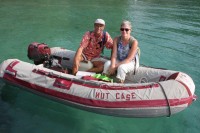
Who: Jim & Katie Coolbaugh
Port: Bethesda, MD USA
Where in the world is Asylum?
Good links
- Vesper Marine Watchmate AIS
- WinchRite Cordless Winch Handle
- Diving at Tubbataha Reef
- Royal Belau Yacht Club, Palau
- ShipTrack: Our route so far
- Passage Weather
- Interview With a Cruiser Project
- Great diving in the Solomons
- Seven Seas Cruising Association
- Divers Alert Network
- Spectra Watermakers
- Rocna Anchors
.jpeg)
